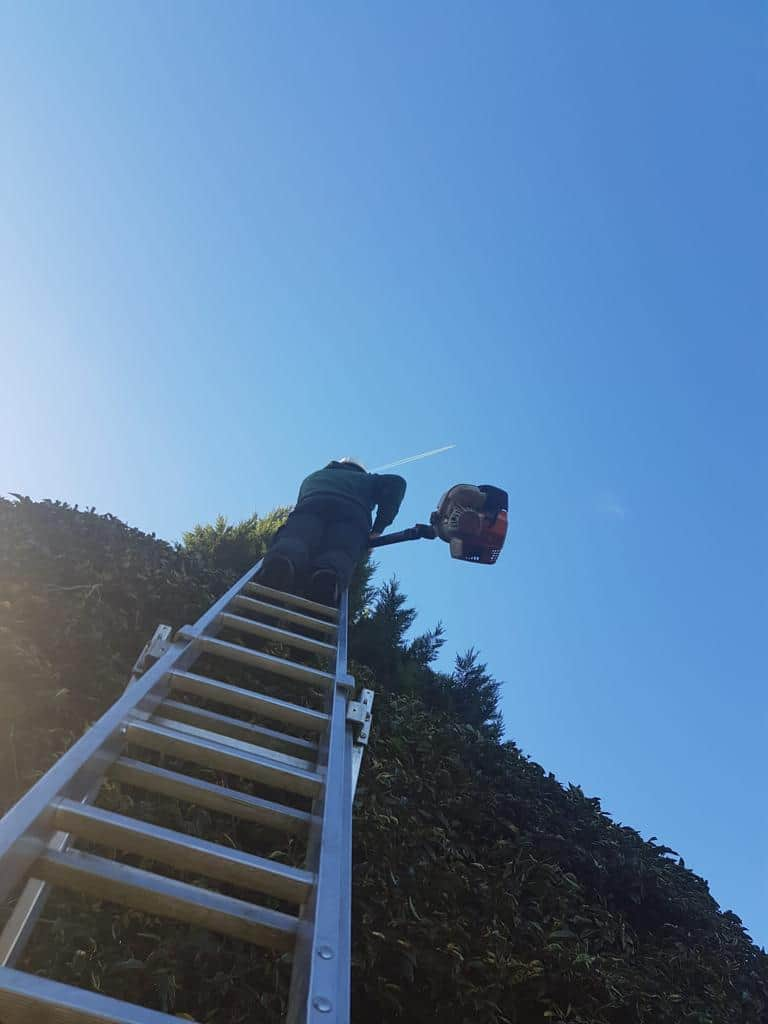Introduction
Hedges are a staple of British gardens—adding structure, privacy, and greenery all year round. In Woodford, Essex, many homes benefit from beautifully maintained hedgerows that define garden boundaries and elevate kerb appeal. However, like any living plant, hedges can face problems that, if ignored, lead to poor health, unsightly appearance, or even permanent damage.
At Woodford Tree Surgeons, we understand the importance of timely, professional care for hedges of all types. Whether you’re dealing with thinning leaves, pests, or uneven growth, understanding the root cause is the first step to restoring your hedge to its best.
1. Uneven or Patchy Growth
One of the most common complaints from homeowners is that their hedge grows thick in some areas but sparse in others. This can be due to inconsistent light exposure, poor pruning techniques, or competition for nutrients.
Solutions:
- Prune during the right seasons to encourage even regrowth
- Open up dense sections to allow light to reach shaded areas
- Feed with a balanced fertiliser in early spring
2. Hedge Browning or Dieback
Brown patches, particularly in evergreen species like Leylandii or Laurel, can indicate root stress, fungal infection, or poor drainage. Dieback can spread quickly if not managed properly.
Solutions:
- Improve drainage around the base of the hedge
- Remove affected branches promptly to stop spread
- Avoid cutting too harshly into old wood
3. Overgrowth and Loss of Shape
Fast-growing hedges can quickly lose their form and take over more space than intended. Left unmanaged, they become difficult to prune and may encroach on pavements or neighbouring properties.
Solutions:
- Trim regularly—ideally two to three times a year for fast growers
- Use the correct tools for clean, precise cuts
- Consider reducing the height or width over a few seasons rather than all at once
4. Pest Infestations
Aphids, scale insects, spider mites, and vine weevils are just a few of the pests that can damage hedge foliage and stems. Signs include distorted leaves, sticky residue, or visible insects.
Solutions:
- Introduce natural predators where appropriate
- Use targeted, hedge-safe treatments during the growing season
- Encourage strong growth with proper feeding and watering
5. Fungal or Bacterial Diseases
Hedges can be susceptible to several plant diseases such as honey fungus, powdery mildew, and box blight. These often spread in warm, damp conditions or when air circulation is poor.
Solutions:
- Improve spacing between plants to enhance airflow
- Remove infected material immediately and dispose of it off-site
- Treat with approved fungicides and monitor regularly
6. Root Competition and Soil Depletion
When hedges are planted too close to lawns, trees, or flower beds, they may struggle to access nutrients and moisture. This results in stunted growth and increased vulnerability to other problems.
Solutions:
- Mulch around the base to retain moisture and suppress weeds
- Deep-water during dry spells to encourage strong root development
- Replenish soil nutrients with slow-release compost or fertiliser
Conclusion
Hedges may seem low-maintenance, but they require thoughtful, consistent care to stay healthy and attractive. When problems arise, prompt action and expert guidance can make the difference between a quick fix and a costly removal. At Woodford Tree Surgeons, we offer tailored hedge maintenance and problem-solving services throughout Woodford, Essex, ensuring your garden stays in top condition year-round.
If your hedge is showing signs of distress—or you’d simply like to keep it looking its best—get in touch with our experienced team. We’re here to help restore balance, beauty, and long-term health to your outdoor space.
Call us on: 020 3917 4991
Click here to find out more about Woodford Tree Surgeons
Click here to complete our contact form and see how we can help with your tree care needs.

